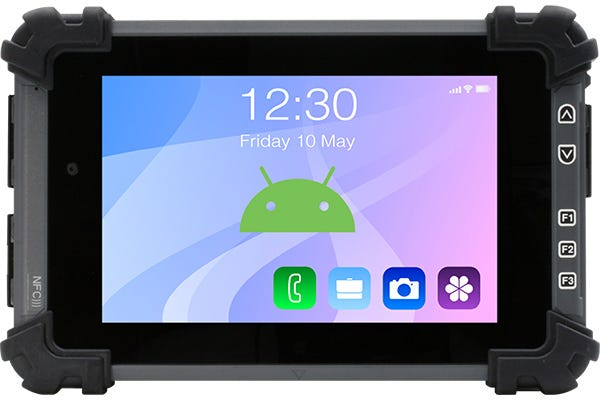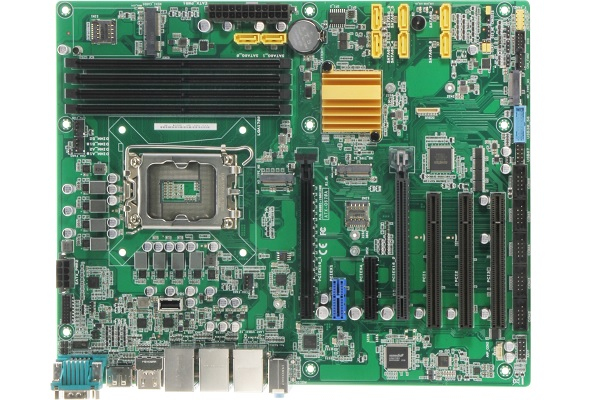Why Embedded Box PCs and Managed Switches Power Smart Automation
- Rohit Sharma
- Jun 21
- 3 min read
As industries move toward digital transformation, the demand for high-performance, compact, and resilient computing infrastructure is greater than ever. From manufacturing lines and energy grids to automated warehouses and edge AI deployments, businesses need reliable solutions that can operate 24/7, under harsh environmental conditions.
Enter the industrial embedded box PC—a compact, rugged, and efficient computing platform purpose-built for embedded applications. When paired with a Managed Ethernet Switch, these systems provide the computing power and networking intelligence required for Industry 4.0 environments.
In this article, we’ll explore how solutions like the embedded box PC, box PC fanless models, embedded computer systems, and the UP Xtreme board are shaping the future of industrial computing.
What Is an Industrial Embedded Box PC?
An industrial embedded box PC is a compact computer built to handle mission-critical tasks in harsh environments. Unlike conventional desktop PCs, these units are designed for durability, continuous operation, and low maintenance.
Key Features:
Rugged Design: Operates in extreme temperatures, with resistance to dust, shock, and vibration.
Fanless Cooling: Many models feature a passive cooling system, making them quiet, energy-efficient, and ideal for dusty or vibration-prone areas.
Compact Size: Their small footprint allows for easy integration into control panels, kiosks, vehicles, or remote enclosures.
Long Lifecycle: Industrial box PCs typically offer longer availability and support periods, crucial for long-term projects.
Fanless PC Systems: Built for Tough Environments
The box PC fanless or fanless PC has become the gold standard in many industrial environments. Here's why:
Advantages:
No Moving Parts: Less wear and tear, leading to increased reliability.
Silent Operation: Ideal for noise-sensitive areas like hospitals or research labs.
Resistant to Dust and Debris: Sealed chassis prevents contaminants from damaging internal components.
Lower Maintenance: Fewer parts to replace or clean compared to traditional fan-cooled systems.
Industries like food processing, transportation, oil & gas, and medical technology all benefit from the low-maintenance, high-reliability profile of fanless PCs.
Embedded Computer Systems: Versatility Meets Performance
An embedded computer system integrates hardware and software to perform dedicated functions, often with real-time constraints. These systems are embedded into the machinery they support, rather than operating as standalone computers.
Applications:
Robotics and Machine Vision: Real-time processing for automation.
Kiosk and Vending Machines: Running POS and interactive systems.
Fleet Management: GPS tracking, telematics, and data logging.
Medical Equipment: Real-time monitoring and diagnostic systems.
These systems are designed to run for years without interruption—making reliability a top priority.
Spotlight on the UP Xtreme Board: Power in a Small Package
One of the standout innovations in the embedded space is the UP Xtreme board. Designed for developers and commercial integrators, it bridges the gap between maker boards and industrial-grade platforms.
Why the UP Xtreme Board Stands Out:
Powerful Processing: Supports Intel® Core™ i3/i5/i7 CPUs.
AI-Ready: Compatible with AI accelerators like Intel® Movidius™ Myriad™ X
Compact Form Factor: Ideal for small enclosures and space-constrained devices.
I/O Versatility: Multiple USB, Ethernet, and serial ports.
Expansion Options: Supports M.2, PCIe, and SATA for SSDs and peripherals.
For developers working on edge AI, robotics, or automation projects, the UP Xtreme board offers a perfect balance of performance, connectivity, and customization.
Why You Need a Managed Ethernet Switch in Your Setup
While embedded systems handle the computing side, they need robust networking to ensure smooth communication between devices, systems, and the cloud. That’s where a Managed Ethernet Switch comes in.
Benefits of Managed Switches:
Traffic Prioritization (QoS): Ensures time-sensitive data like control signals are prioritized.
Network Segmentation (VLAN): Improves security and isolates data traffic.
Redundancy Protocols: Minimizes downtime through network failover (e.g., RSTP, MSTP).
Remote Monitoring and Control: SNMP support allows IT teams to monitor and manage the network remotely
Scalability: Easily integrate more devices and nodes as your system grows.
In automated factories, intelligent buildings, and remote infrastructure sites, a Managed Ethernet Switch ensures reliable communication and rapid response during failure or overload conditions.
Final Thoughts
In today’s industrial environments, where uptime, data accuracy, and edge intelligence are critical, choosing the right hardware isn’t just a technical decision—it’s a strategic investment.
Whether it’s a fanless embedded box PC for rugged field deployment, a powerful UP Xtreme board for AI-enabled automation, or a Managed Ethernet Switch to ensure secure and stable communication, each component plays a pivotal role in building a resilient and scalable digital infrastructure.
Our recommendation: evaluate your application’s environmental and processing needs, then invest in hardware that supports long-term performance and future expansion. With the right embedded computing and networking solutions in place, your operation will be positioned to thrive in the era of Industry 4.0.





Comments